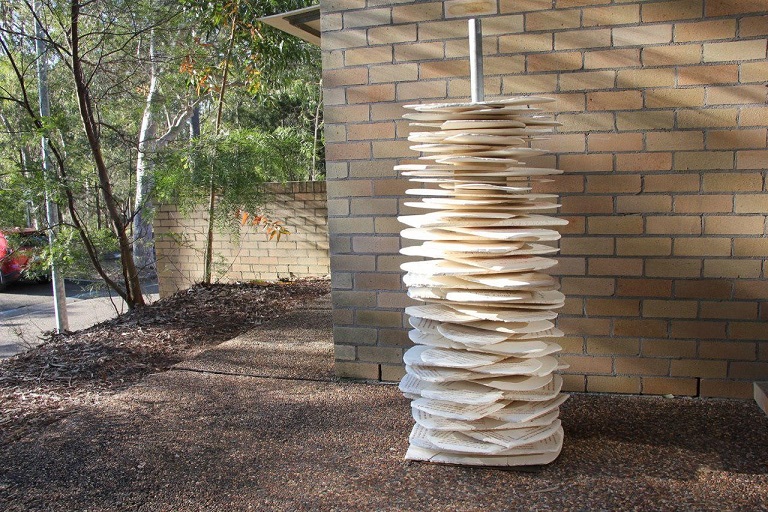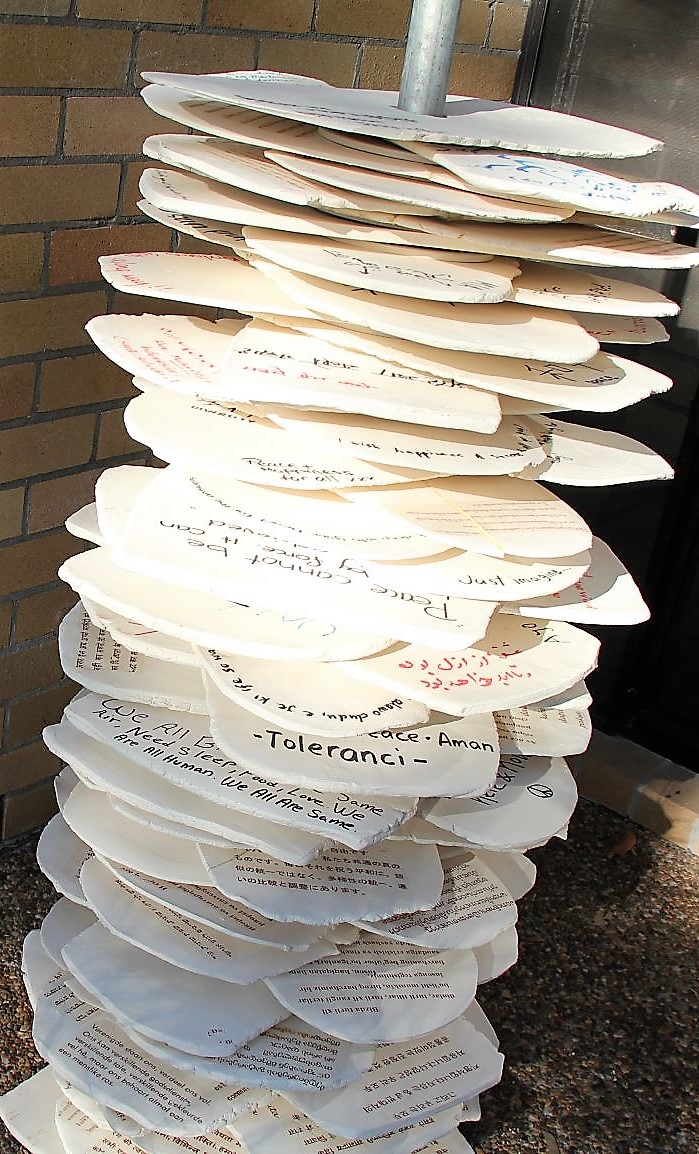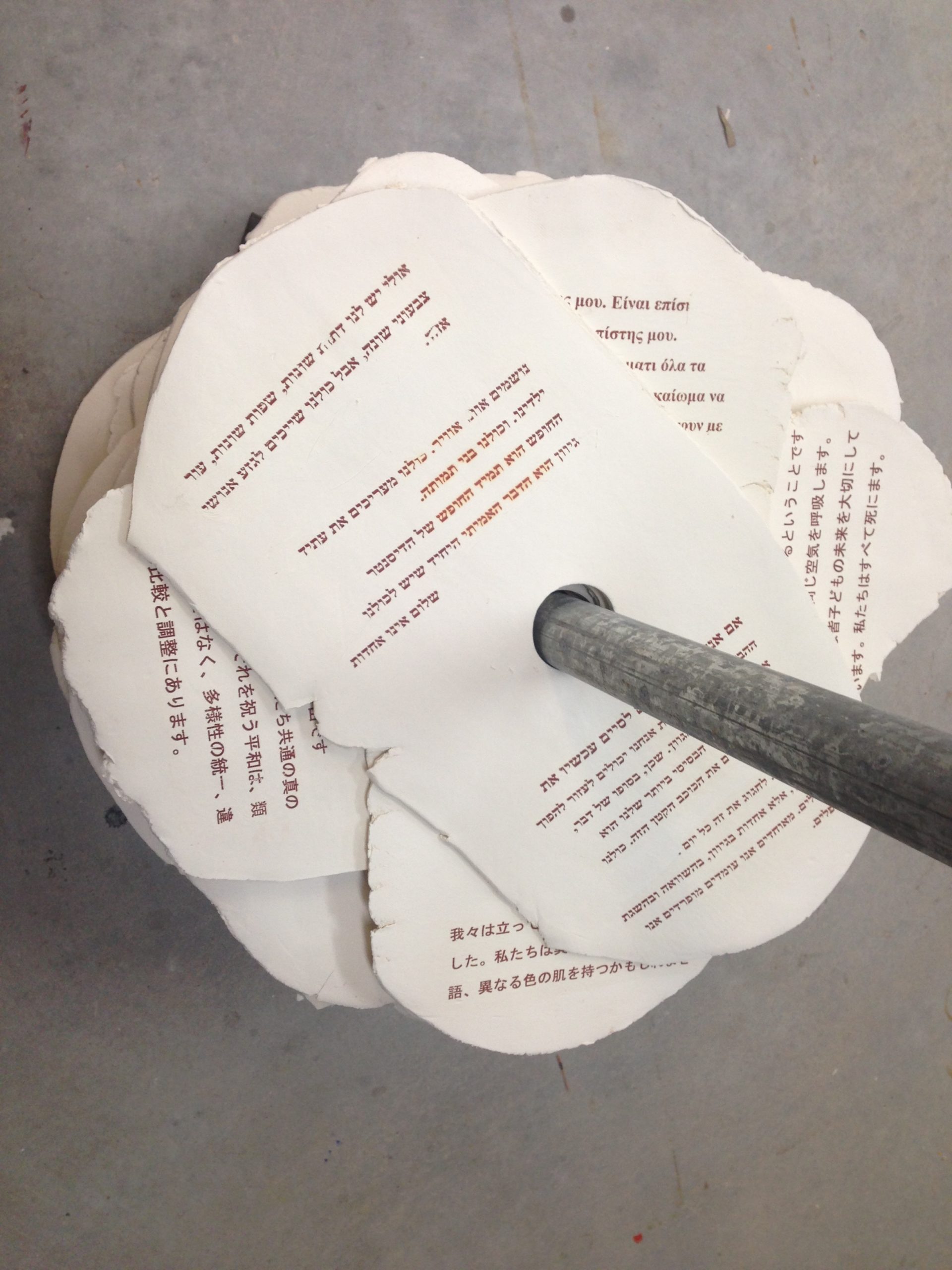THE RE-CONSTRUCTION OF THE TOWER OF BABEL II, 2017
Handmade earthenware fired, steel pole
65 x 145 x 65 cm.
The narrative of the construction of the Tower of Babel is a metaphor for conscious political participation in a democracy. Habibi has addressed the mythological story of the tower of Babel with a focus on materiality, interaction and participation in a public location. Several possible interpretations, some obvious and some superficial.
She invited the public to participate in an interactive art installation, building a tower based on diversity. The writing on this artwork has been applied by individual participants in various languages. The re-construction of the tower of Babel II, 2017 was displayed in a semi-public outdoor location in the grounds of the University of Newcastle and because of this location the audience for this work consists entirely of students and staff of the University. This selected audience is likely to be aware of the symbolic meaning in the collection of some dispersed languages, as components of one structure built with the purpose of highlighting what unites us as human beings.
A reconstruction of the tower of Babel may be considered blasphemous by religious conservatives, who could argue that, since the tower of Babel was destroyed by God himself, he would not want the tower to be rebuilt. With this artwork she is not addressing the relationship between God and the religious disciples, but the possibility of participation by individuals in the construction of an improved society.
The bricks used for the tower are clay tablets that contain text, which can be read as a reference to the Ten Commandments. Individual participants from various linguistic backgrounds have applied the writing on this work. In order to make sure that the participants actively and consciously take part, the content of the writing is not controlled, and may express ideas, which are critical of the concept of the reconstruction of this tower. The basis of democracy, to refer to Habermas, is participation.
Clay is a natural material, which occurs naturally in the ground. It easily accepts an imprint and for an artist this quality can be autographic, because the maker’s mark is visible as a signature. Clay is malleable and its forms are readily reproduced in moulds. One early use of clay was the production of bricks, which after firing retain their shape. The Tower of Babel (Genesis 11.4) was told to be built from fired bricks. In this installation she used clay plates as bricks. Each plate has a hole in the centre, with a central steel pole holding them all in place to form a vertical structure. The size and weight of each fired plate is similar to a standard brick, made in such a size and shape that a bricklayer can easily lift them continuously every day. The role of the individual worker in the construction of the biblical Tower of Babel is that of the trade worker who builds without participation in the process of making bricks. The interaction between viewer and artwork will occur after the work is assembled. To that extent, the contribution of the audience is in embedded in the work through the writing and the active engagement with the work on completion. The writing on the tiles in a range of different languages is intended as a metaphor to represent all languages and cultures.


